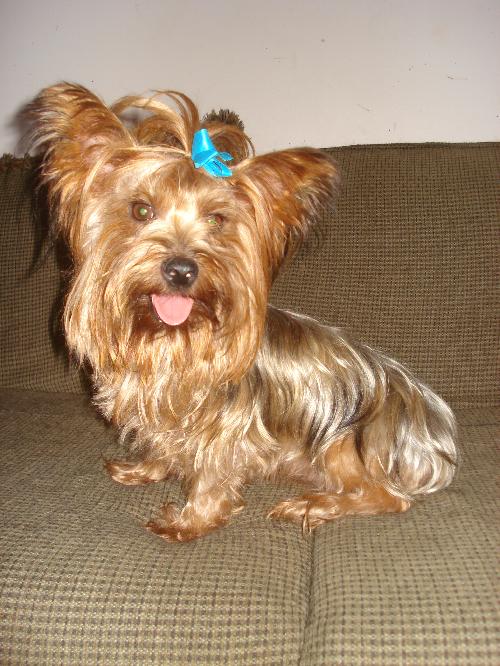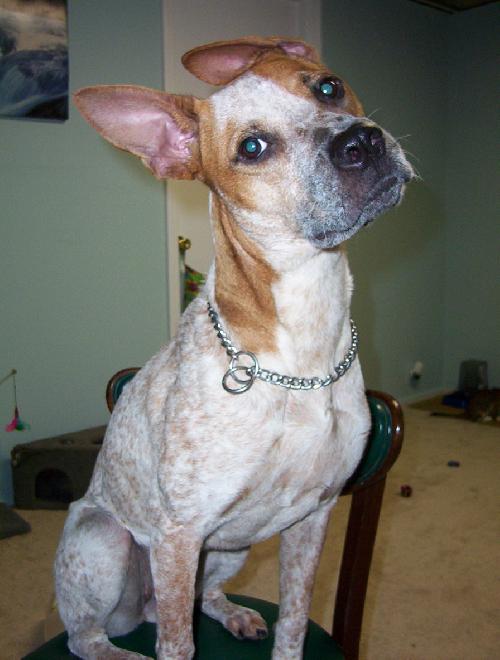|
Cullen's Archangel RescuE, Inc.
iRescue • iFoster • iDonate • iAdopt • iCARE
|
HomeAnimalsAbout UsContact Us | |
What to Expect When You're Expecting (a Dog)So, you've found the dog of your dreams. You're excited about bringing a new family member into your life. What can you expect when your new dog moves in, and how can you be prepared for the new arrival? Essential Supplies
Food - Changing a dog's food abruptly can cause diarrhea, sometimes for several weeks. To avoid this, continue feeding the same food provided by the foster home, or mix the old with the new to gradually adjust your dog to a new diet.
Food & Water Dishes - Pick a spot and leave them in the same place so your dog knows exactly where to go for water. Make sure the water bowl is clean and has fresh water at all times.
Crate - Crates make the adjustment period less stressful for you and your new furbaby. The crate should be big enough for your dog to stand up, turn completely around, and lie down comfortably in.
Puppy ProofingEven if your dog is older, curiosity can get the better of him. Make sure your home is a safe place for him by putting yourself in his paws. Crawl around on the floor and check out any potential dangers. Electrical cords, poisonous houseplants, and any item small enough to swallow are just a few of the things that should be out of his reach. Veterinarians perform more surgeries to remove strange objects that a dog has swallowed than for anything else. Dogs will swallow anything, like the dog who swallowed 28 golf balls! Even after puppy proofing, it's a good idea to not leave him unsupervised in the house until he has learned what is off limits. That way, he won't have the chance to develop any bad habits while you're not looking! You'll also avoid having to buy all new shoes because he chewed up one from each pair. If your dog destroys something that is valuable to you, it is your fault for making it available to him. Dogs have no concept of how much something costs, and they don't chew things to spite you. They do it because it is fun. Dogs also chew to relieve stress, so a dog who normally doesn't chew things may do so when under stress. Make available appropriate chew toys and keep items you don't want chewed out of teeth reach!Meeting the ChildrenThe kids are probably beside themselves with excitement about the new doggie. They probably can't wait to play with him and show him just how much they love him. Prepare your children ahead of time so that they understand the boundaries.
Meeting the Other Pet(s)Hopefully, the pets you already have are just as excited about the new addition as you are. Here are some tips to help make sure of it.
Adjustment Period Moving to a new home can be stressful for dogs. It's an unfamiliar place with unfamiliar people. Some dogs experience stomach upset and diarrhea. Housetrained dogs may regress and have accidents. Some will shy away from you for a while until you earn their trust. Be patient with your baby. It may take a while for him to adore you as much as you adore him. How long it takes is different for every dog. It could take anywhere from 3 days to 3 months for your new guy to settle in. Just be patient with him and show him in all of your actions that he is safe with you. If you are having any problems or have any questions during the adjustment period about a dog you adopted from CARE, please do not hesitate to call us. We will do everything we can to help ease the adjustment period for both of you. Moving to a new home can be stressful for dogs. It's an unfamiliar place with unfamiliar people. Some dogs experience stomach upset and diarrhea. Housetrained dogs may regress and have accidents. Some will shy away from you for a while until you earn their trust. Be patient with your baby. It may take a while for him to adore you as much as you adore him. How long it takes is different for every dog. It could take anywhere from 3 days to 3 months for your new guy to settle in. Just be patient with him and show him in all of your actions that he is safe with you. If you are having any problems or have any questions during the adjustment period about a dog you adopted from CARE, please do not hesitate to call us. We will do everything we can to help ease the adjustment period for both of you. If you're adopting a puppy rather than an adult dog, expect an adjustment period for yourself, too! Adopting a puppy is like having a baby. There will be lots of potty breaks because their bladder isn't yet fully developed. Expect to get up a couple of times during the night for potty breaks. If you work, plan to come home everyday at lunch to let your puppy outside to potty. If you can't come home, consider hiring a pet sitter. Or, use an X-pen instead of a crate and set up a potty area on one side. Just know that a puppy HAS TO potty several times a day and plan accordingly. Puppies will also chew on everything available, so don't make anything available that he shouldn't chew on. Establishing the RulesIt can be tempting when you bring home a new dog to be a little lax on the rules. Resist the temptation to avoid problems later on. It's much easier to prevent a bad habit from starting than it is to break one. Not only that, but dogs, like children, like rules. It makes them feel more secure to know exactly what is expected of them and exactly what happens if they don't follow the rules. It also keeps order in the household. If you have other pets who already know the rules, they can get quite stressed out by an unruly newcomer. Whatever you do, do NOT feel sorry for your poor little rescue dog. Nobody wants pity, dogs included. For your dog's best interest, put whatever sad past he may have had behind him and live in the current moment. He's with you now, happy and cared for; he has no need for pity.
Expect your dog to break the rules frequently in the beginning. He is not being stubborn or difficult. Dogs have a hard time generalizing, which means that something he learns in the living room will have to be learned all over again in the kitchen. It's easy to get frustrated when you feel like he should understand already, but he still doesn't. It helps to have a sense of humor. It can take 30-50 or more perfect repititions before a dog truly "gets" a command. Licensing & IdentificationIf your city requires dogs to be licensed, get this taken care of right away. Licenses can usually be purchased at the Vet's office. Even if your city does not require a license, it's a good idea to provide contact information on your dog's collar. If your pet is lost or stolen, microchipping is a good way to ensure his safe return. Collars can come off, but microchips are there to stay. Dogs adopted from CARE are microchipped prior to adoption.Training & BehaviorJust like children, dogs need to be taught good behavior. Whether you're bringing home a puppy or an adult, you can expect that he will do some things that you don't approve of and maybe have some bad habits. Your dog will need to be taught how you want him to behave. The easiest and most fun way to teach your dog is to take him to school. You both get to meet other people and dogs. You get the benefit of expert knowledge and immediate feedback. Your dog gets socialization. Both of you may even make a new friend there. You can also work on teaching your dog yourself. There are lots of resources available, but it can be difficult to determine which information is bad and which is good. Trust your gut. Ask yourself what kind of relationship you want with your dog and if the advice you are reading lends itself to building that kind of relationship, or not. You can start with CARE's training & behavior tips. If your dog has habits you'd like to break, don't give up on him. Teach him instead!
Training also makes dogs happy. Studies on the brain show that animals like to have their brains challenged. As long as you use positive methods to teach your dog, he will LOVE learning. Training also helps your dog understand that they are supposed to take direction from you. Many people remain frustrated that their dog "refuses" to listen, is "stubborn", or just plain stupid. In reality, they have not taken the time to formally train the dog and think he will automatically know how to take orders. It doesn't work that way, but my experience with foster dogs shows that formally teaching just one command switches on their brains, and they get that they are supposed to listen to you! It's amazing how intuned dogs are to us. All we have to do is push the right button to "turn it on". To Sum it Up...
Additional ResourcesRaising a PuppyAdopting an Adult Dog Adopting a Senior Dog |



